The AMD Radeon RX 590 Review, feat. XFX & PowerColor: Polaris Returns (Again)
by Nate Oh on November 15, 2018 9:00 AM ESTMeet The Cards: XFX & PowerColor
As there are no reference cards, for today's launch AMD sampled us the XFX Radeon RX 590 Fatboy. PowerColor also sampled us their RX 590 Red Devil. Both sport modest factory overclocks over the reference 1545MHz boost, and both feature dual BIOS with performance and quiet options. Broadly-speaking, if you're already familiar with PowerColor's Red Devil and XFX's GTS designs for Polaris, then you'll already know what these boards are like.
| Radeon RX 590 Series Cards | ||||||
| XFX RX 590 Fatboy | PowerColor RX 590 Red Devil | Radeon RX 590 (Reference) | Radeon RX 580 (Reference) |
|||
| Boost Clock | 1580MHz | 1576MHz | 1545MHz | 1340MHz | ||
| Memory Clock | 8Gbps | 8Gbps | 8Gbps | 8Gbps | ||
| VRAM | 8GB | 8GB | 8GB | 8GB | ||
| TBP | TBA | TBA | 225W | 185W | ||
| Length | 10.63" | 10" | N/A | N/A | ||
| Width | 2.5 Slot | 2.5 Slot | N/A | N/A | ||
| Cooler Type | Open Air | Open Air | N/A | N/A | ||
| Price | TBA | ~$299? | $279 | $229 | ||
Both of the cards are relatively typical for custom factory overclocked designs, featuring thick heatsinks, dual axial fans, 1x8pin + 1x6pin for power, and the extremely essential presence of LEDs. Right now we don't have a definitive answer on price, but expect them to be in the high $200s to low $300s range where heavily factory-overclocked GTX 1060 6GB cards reside. For the opening launch window, all the partner cards are marked at the $279 SEP.
XFX Radeon RX 590 Fatboy
From the outside, the XFX Radeon RX 590 Fatboy looks to be much of the same with its existing RX 500 and 400 series models. The card's amusing namesake comes from the new heatsink design that XFX is calling the 'Fatboy Unibody VRM Heatsink,' and the company claims the design brings 50% greater heatsink surface area over previous RX 400/500 series cards. So it would seem it's an iteration on the Unibody VRM Heatsink introduced by RX RS and GTR series cards.
As silly as the 'Fatboy' name may be, it seems to have done its marketing job by raising interest, critical or otherwise, and for a subdued Polaris refresh SKU, that extra differentiation can be helpful.
And in terms of 'fatness', the RX 590 Fatboy has the 2.5 slot Double Dissapation style cooler, leading up to a height of 2.09". Thick, but perhaps not as thick as the Red Devil, which stands at 2.24". In any case, the card is neatly clad in an aluminum backplate. Right next to the PCIe power connections is the BIOS dip switch, toggling between Performance and Quiet/Lower RPM.
The display output situation is fairly standard for both cards, with 3 DisplayPorts, 1 HDMI, and 1 DL-DVI-D port.
PowerColor Red Devil Radeon RX 590
For the Red Devil RX 590, the thermal solution doesn't appear unchanged from the RX 580 version, sharing the same dimensions, 4x8mm + 1x6mm heatpipes, 6+1 power phases, and DrMos. At 10" long but 2.24" (57mm) high, the Red Devil RX 590 is a particuarly squat but thick card - just 3mm away from the standard triple-slot width. So prospective buyers should keep that in mind for smaller form factors, occupied neighboring PCIe slots, or chassis airflow management.
While the card has the red Red Devil LED, one of the more easily overlooked features is a small dip switch to disable LEDs. Both BIOS and LED switches are labelled so on the pentagram-emblazoned 1.5mm metal backplate.
Both the XFX Fatboy and PowerColor Red Devil have zero dB fan functionality as well, turning off the fans under certain temperatures and lighter workloads.


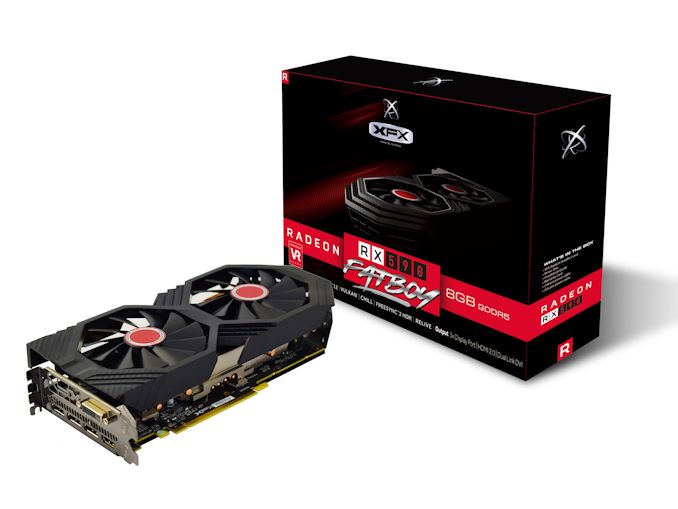
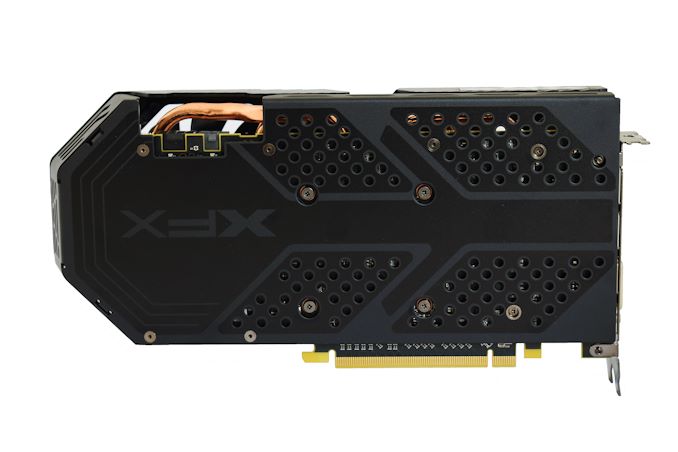
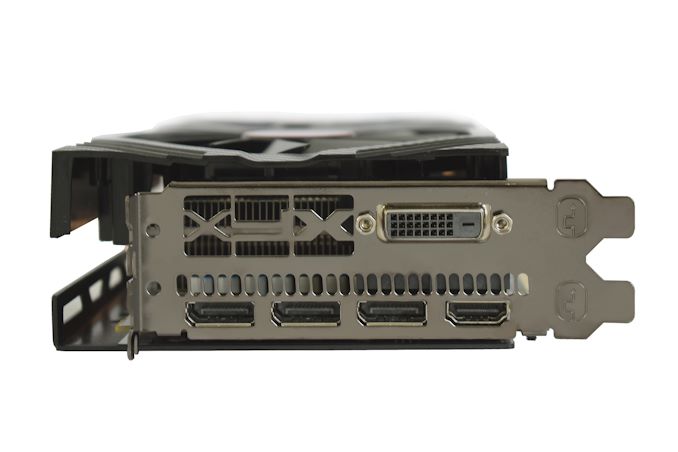
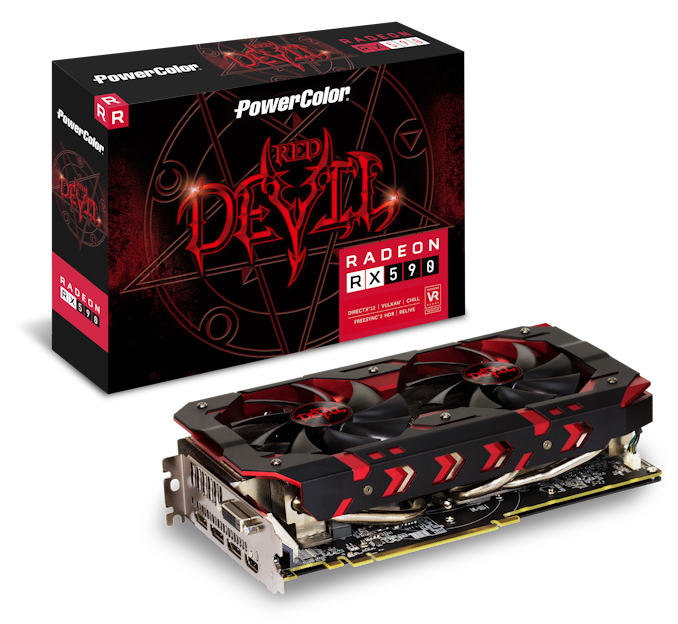
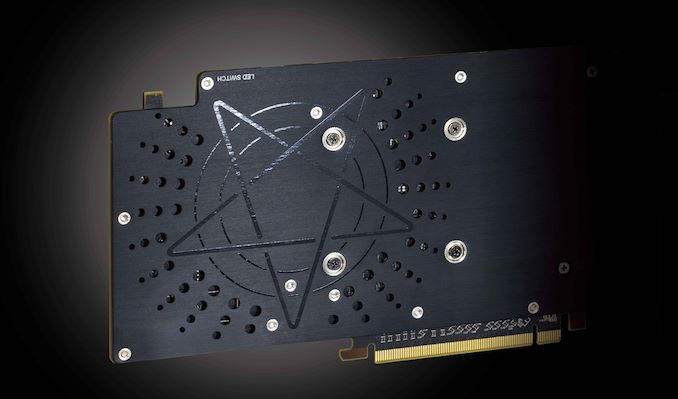








136 Comments
View All Comments
Diji1 - Thursday, November 15, 2018 - link
You know what they say about a fool and his money.Almost every gamer on Steam is using a GTX 1060 class GPU which is less powerful. Every single gamer on Steam made a loss on their "investment".
gopher1369 - Friday, November 16, 2018 - link
" I believe that the GTX 1070/Vega 56 ...should be considered as the minimum investment for a gamer in 2019"Meanwhile I'll continue to enjoy the vast majority of my games quite happily in 1080p / 60FPS on my perfectly good 1050Ti.
AMD#1 - Tuesday, November 20, 2018 - link
No, those prices are still to high. Vega is that expensive deu to HBM, and 1070 because NVIDIA is asking to dam much. 1070/V56 are high end, compaired to next gen it will be mainstream. Navi will hit early 2019, my guess is prices will get lowerdel42sa - Thursday, November 15, 2018 - link
patheticDragonstongue - Thursday, November 15, 2018 - link
Agree, 12nm might have helped them to hit higher clocks, but it certainly has not helped much at all in regards to power consumption or temps IMO, all for the "low price" of an additional 50+$ when it hits the shelf (knowing the AIB likely will not be $299 will most likely be $339 (~445-448 CAD)for me, the 570 seems "the better pick" for an overall capable 1080p level card or 1440p at reduced settings, at lest the power use is not terribad and pricing is much more "palatable" on the shelf compared to the 580s and likely very much compared to this 590 and the V56 which is over $600 where I can get them up here in the great white north.
WithoutWeakness - Thursday, November 15, 2018 - link
There is no "reference" 590 card. They are all AIB cards. The XFX card featured in the article is on sale on Amazon right now for the $279 MSRP. Sure, there will be triple-fan OC cards for $300+ and some RGB LED monstrosity models pushing closer to $400 but this is available today for the advertised price.At the same time, go buy a 570 or 580 (or even a used 480 8GB if you can find one that wasn't mined on) and OC the thing if you want. Nearly the same card and keep money in your pocket.
dazz112 - Thursday, November 15, 2018 - link
Seems like there's no reason to buy gtx1060 anymore (unless it's a lot less cheaper)ToTTenTranz - Thursday, November 15, 2018 - link
Unless you're stuck with a tiny form factor or a 300W PSU.silverblue - Thursday, November 15, 2018 - link
Except for the significantly better performance per watt, and the fact you can put that in a SFF case. There are obvious benefits to Polaris 30 such as FreeSync compatibility and the larger frame buffer, but if you require a new PSU when you didn't with the 1060, that's an extra cost.With the power figures on show here, I'm immediately wondering about the benefits of undervolting, as well as where the actual frequency sweet spot is. 12nm hasn't exactly been a notable success story for AMD, and with 7nm on its way, I'm not sure what this experiment was supposed to show.
Cooe - Thursday, November 15, 2018 - link
This is a completely different 12nm process than what AMD used for Zen+ (TSMC vs GloFo; Nate's article is wrong), so any equivalencies between them are actually largely just coincidence. Though I SERIOUSLY don't really know in what world you wouldn't described Zen +/Ryzen 2nd Gen as a success story.